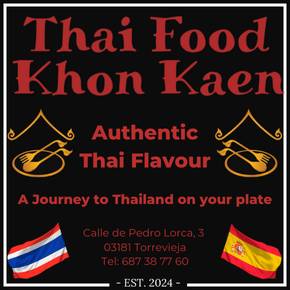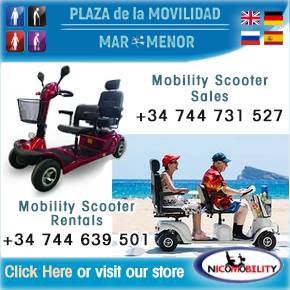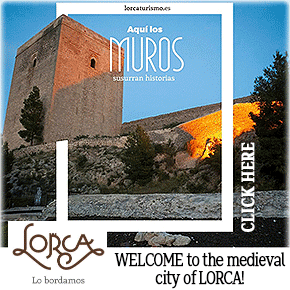The world of Spanish coffee EXPLAINED: Everything you need to know about cafe culture in Spain
With a bewildering array of coffees to choose from in Spain, how do you know which one to order and what is in it?
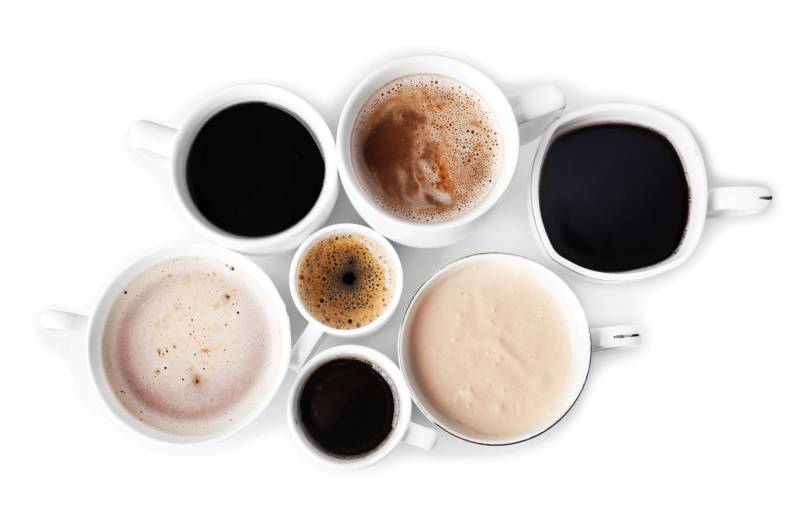 Walking into a café or bar in Spain and looking forward to a comforting cup of coffee can sometimes seem daunting, with the shiny espresso machine hissing in the background, when the reply to your request for a cup of coffee is “What type?”
Walking into a café or bar in Spain and looking forward to a comforting cup of coffee can sometimes seem daunting, with the shiny espresso machine hissing in the background, when the reply to your request for a cup of coffee is “What type?”The espresso machine tends to be the omnipresent fixture in most bars, cafés and restaurants and provides the basic ingredient for most, if not all types of coffee variants in Spain. Espresso is a concentrated type of coffee made with specially roasted beans and an espresso machine. The coffee beans are usually finely ground in situ and packed into a portafilter, which is then locked into the base of the espresso machine. Very high pressure (a necessity for espresso) forces water through the packed coffee grounds to create 1- or 2-ounce shots of creamy, thick espresso.
From there, though, there’s a whole long list that the Spanish have of possible variations on this deceptively simple drink. Here is a guide to some of the most popular coffees on offer in Spain and what to say if you want to order one:
Coffees with no milk or just a little (or just alcohol)
- Café solo: A small cup of strong, black espresso.
- Café solo doble: Same as above, but with an extra shot of espresso
- Café americano: If the intensity of a café solo is too strong for your taste, a café Americano could be the answer. This contains the same amount of caffeine as a café solo but with more water, resulting in a diluted milder flavour.
- Café cortado: A small cup of espresso with just a splash of milk. The Spanish word ‘cortado’ means “cut” so think of it as coffee “cut” with a small amount of milk.
- Café con hielo: A summer favourite is simply coffee with ice. Served in two glasses: one containing black espresso and another containing ice cubes. After adding your required amount of sugar or sweetener, stir the hot coffee to dissolve the sugar then pour the hot coffee over the ice. It may sound a little fiddly, but its perfectly refreshing in the summer heat.
- Carajillo: No milk here, just alcohol!! A carajillo is espresso served with rum, whiskey or brandy.
- Descafeinado: Decaffeinated coffee, not hugely popular in Spain so may be made “de sobre”, which means using instant coffee from a packet. If you specifically want decaffeinated espresso ask for “Descafeinado de máquina” to find out if it is available.
Coffees with more milk (and maybe alcohol)
- Café con leche: Coffee made with equal parts espresso and milk. Sometimes you may be asked if you want hot or cold milk. If you’re in a rush and can’t wait for the steamed milk to cool, you can ask for leche fría o leche templada (cold or lukewarm milk).
- Café manchado or leche manchada: Literally translating to “stained” (or “stained milk”), this drink consists of mainly warm milk “stained” with a splash of coffee. It’s a great option for the afternoon if you’re craving coffee but don’t want to be up all night.
- Café vienés: Considered a speciality coffee, it can be based on a Café con leche or Café manchado topped with whipped cream with an optional sprinkling of cocoa powder.
- Café bombón or biberón: Espresso with sweetened condensed milk. An especially great choice for those with a sweet tooth!
- Café Irlandés - Irish Coffee: Although not strictly a Spanish coffee, it is popular in Spain and commonly served as a dessert. Made with whiskey and one to three spoons of sugar, heated so it becomes thick enough for the coffee to float on top of it. Then topped with whipped cream.
- Café Asiático: A Murcia favourite, Café Asiático blends coffee, condensed milk, brandy and Cartagena produced Licor 43, with a hint of cinnamon and lemon peel to enjoy at any time of the day or night.
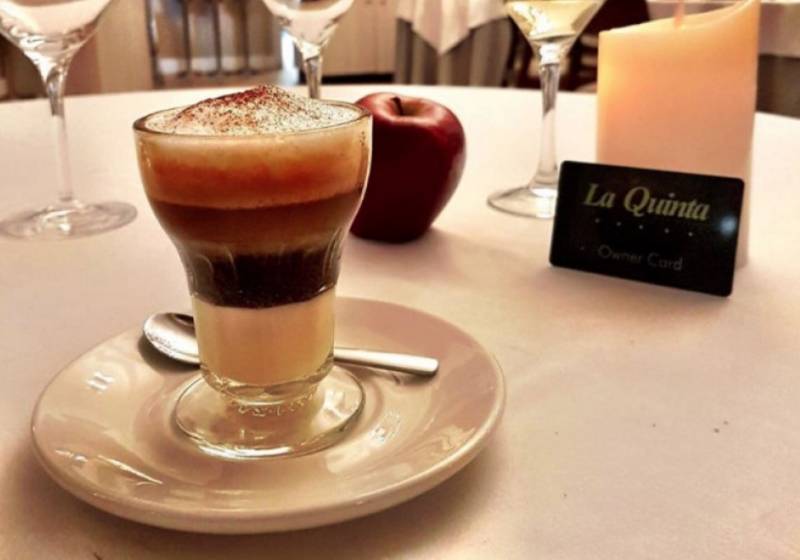
Café Asiático
Other options to consider
Once familiar with the basic types of coffee and knowing the names of the drinks that you want to order, there are also some other options available in the way it is served.
Temperature of the milk:
- Caliente: Hot, steamed milk.
- Fría: Cold milk from the fridge.
- Templada: A mix of hot and cold milk.
- Del tiempo: Room temperature
- Con la leche aparte: Milk served in a separate jug for those who want to control the exact amount of milk in their coffee.
The type of cup or glass you’d like your coffee served in:
- Copa: Café con leche is usually served in a ceramic cup.
- Taza: A mug with a handle.
- Vaso: A small clear glass with no handle. Most traditional bars in Spain will serve coffee this way.
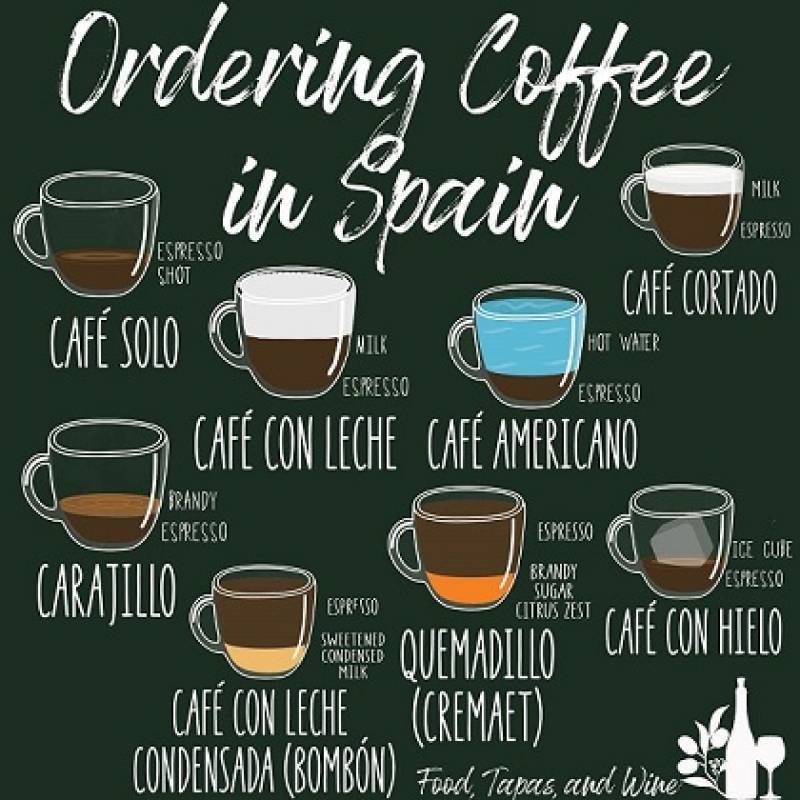
So now you know all about the different types of coffee served in Spain and how to order them in your best Spanish, get out there and discover which is your favourite type of Spanish café!
Image 1: Archive
Image 2: La Solana Bar & Restaurant, La Quinta Club, La Manga Club
Image 3: Food, Tapas and Wine
Loading
Sign up for the Spanish News Today Editors Roundup Weekly Bulletin and get an email with all the week’s news straight to your inbox
Special offer: Subscribe now for 25% off (36.95 euros for 48 Bulletins)
OR
you can sign up to our FREE weekly roundup!
Read some of our recent bulletins:
Discount Special Offer subscription:
36.95€ for 48 Editor’s Weekly News Roundup bulletins!
Please CLICK THE BUTTON to subscribe.
(List price 3 months 12 Bulletins)
Read more stories from around Spain:
Contact Spanish News Today: Editorial 966 260 896 /
Office 968 018 268




























